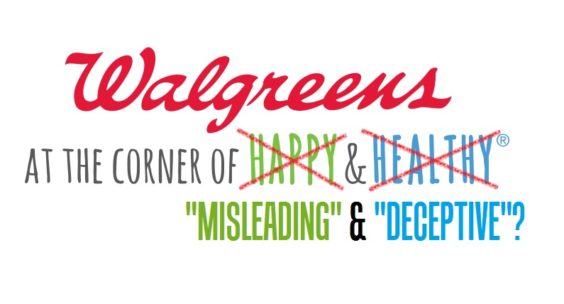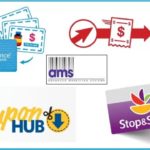In some ways, a store loyalty program is the ultimate bait-and-switch. Retailers are able to lure us into their stores by promising lower prices, while knowing that a certain percentage of careless or confused shoppers who aren’t loyalty program members will end up paying the higher prices that are hidden in the fine print. Throw in some really confusing shelf tags, a buy-now-earn-later rewards system, and sloppy signage, and it might make the whole loyalty program seem like, well, a bit of a scam.
That’s what Missouri’s Attorney General is alleging about Walgreens, its pricing practices, and its Balance Rewards program.
The Show-Me State’s top law enforcement official has filed suit against the drug store chain, alleging that Walgreens has “consistently and systematically displayed inaccurate sales tags, overcharged customers, failed to remove expired sales tags, failed to consistently ensure the price charged is the same as the price advertised, and used misleading or confusing in store-signs.”
Even worse, he worries, the pattern of overcharging may not be an innocent mistake. “My concern is this is not sloppiness,” Chris Koster said in a news conference announcing the lawsuit yesterday. “This is a business practice that is consciously intending to steal from sick people that go into Walgreens, from old people that go into Walgreens.”
Koster’s office sent undercover shoppers into eight Walgreens locations across Missouri in June and July of this year. Among their findings:
- “There were over 100 advertisements which displayed sale prices after the sale had expired.”
- “Overcharges at the point of sale varied in amount and ranged from a few cents to over $15.00.”
- “On a single day in July 2013, overcharges and inaccurate advertisements were documented in every store inspected.”
- “On a single date in July, over 17 percent of the merchandise purchased rang up at the point of sale at an amount higher than the advertised price.”
In the lawsuit, Koster singles out Balance Rewards for adding to the confusion – perhaps intentionally so. Before the loyalty program came along last year, shelf tags could include multiple prices – the regular price, the sale price and a “like getting it for” price after factoring in Register Rewards that are actually only good on a future, not a current, purchase. Balance Rewards adds another “like getting it for” price into the mix, with its buy-now-and-earn-points-toward-a-future-discount promise. And you have to be a member of the program to get the sale price on the shelf tag, otherwise you pay the full price. And if you don’t use your Register Rewards or Balance Rewards points, you don’t get the “like getting it for” price at all.
Walgreens’ shelf price tags “require unreasonably careful study,” the lawsuit claims, and makes it “difficult for a reasonable consumer to discern the actual price of the item.” The suit also singled out “tags that contain claims that the purchase of an item is ‘like getting’ the product for the reduced price displayed, when in fact that is not accurate.” Plus, it brands certain shelf tags as “deceptive”, if they “contain fine print that the purchase of an item at the sale price displayed requires a coupon from Walgreens’ print advertisements in addition to membership in the rewards or incentive program.”
If you’re familiar with shopping at Walgreens, that pretty much describes the way things can be there – deciphering the deals is an acquired skill for the expert, a head-spinning exercise in futility for the uninitiated. But it goes beyond just causing consumer confusion, Koster claims, when you factor in the overcharges and mislabeled prices he alleges that his mystery shoppers encountered, even when they had a Balance Rewards membership.
“This level of consumer deception,” he said, “is appalling.”
Walgreens’ problems with shelf prices have been documented before. In May, the union-backed advocacy group Walgreen Strategy Watch produced a report that claimed Walgreens had a problem with chronic out-of-stocks (read: “On Sale at Walgreens? Good Luck Finding It”). It also mentioned, almost as an aside, that as many as 90% of sale items it examined were mislabeled.
Other anecdotal evidence of overcharges are relatively easy to find – at least among shoppers who paid close attention and actually noticed something was wrong. Hours before Koster announced his lawsuit, a shopper from North Carolina complained on Walgreens’ Facebook page that an advertisement and shelf tag for Purex laundry detergent said “Buy 1 at $4.79, Get 2 Free.” Instead, she said, the products rang up as 3 for $5.99. “I find this deceptive,” she wrote, using the same term Koster used in his news conference later that morning. “Now I wonder how many other things have I purchased and not been paying attention and have been cheated. How much extra have I spent while thinking I was saving money???”
But the evidence is not just anecdotal. Walgreens has been fined for inaccurate pricing before – at least twice this year alone. In January, it paid $1.4 million to settle a lawsuit filed by four California counties, for allegedly charging prices higher than those marked on the shelves. One county prosecutor was kinder in her characterization of Walgreens than Koster was, though. “A lot of the times it is not intentional,” said Santa Clara County Deputy District Attorney Martha Donohoe. “It can be human error.” But three months later, Walgreens paid nearly $30,000 to settle similar claims in Wisconsin. As in the California cases, Walgreens did not admit any wrongdoing.
And it’s not ready to admit wrongdoing in Missouri, either. “We were disappointed and disagree with the attorney general’s comments,” Walgreens spokesman James Graham said in a statement, responding to Koster’s lawsuit. “However, we are prepared to have a constructive dialogue about the issues he raised and address any appropriate concerns.”
So are the discrepancies willfully deceptive, as Koster believes might be the case, or mere human error, as Donohoe charitably suggests? Walgreen Strategy Watch thinks there’s a third possibility. “We believe lower overall staffing levels may be a contributing factor to Walgreen’s operational problems,” the group wrote in its May report. “The company’s staffing has not kept pace with its store growth.” That could explain outdated shelf tags that staffers haven’t gotten around to changing, or cash registers that haven’t been reprogrammed to ring up a new sale price.
But it doesn’t explain a loyalty program that adds yet another layer of confusion to an already confusing pricing structure. Walgreens likes to point out how many millions of shoppers have signed up for Balance Rewards, but the grumbling about the program was loud enough that even Walgreens had to acknowledge it earlier this year (read: “Walgreens: ‘There Are Some People Who Do Not Like’ Balance Rewards”). “If you’re not a Balance Rewards loyalty member, you don’t get any of our promotional prices,” said Walgreens CFO Wade Miquelon. “There are some people who do not like that.”
And there are some people who do not like being overcharged and deceived. Including one in Missouri who has now exercised his power to do something about it.















It’s still happening in missouri. I have to watch the totals ringing up like a hawk. Every single sale item except 1 rang up wrong today. Taht was almost $10 difference! they did fix it at the register when i caught it, but I had to catch it, you can’t tell me nobody else bought the same item with the same sale tag all day long.
Walgreens in NC. Here’s the great way they had to bilk customers… they advertise buy one get one free. Then they mark up the first item about double the price SO…. you are NOT getting it free . Rather you actually end up paying about five dollars more than you could have gotten it somewhere like Walmart or Rite Aid
Its happened just once to me at walgreens. But I always check and double check. Ishop more at CVS and similar pricing problems have happened several times there. Walgreens has been much accurate at pharmacy counter for us. But I think any of the large chain stores are only as good as the people who work there. So one location may be great on most days and another location can be soso or awful.
LOL-I thought it was just me!
I have never made a trip to Walgreens where there was not at least 1 item that rang up ‘higher than I expected’.
My most recent trip involved an end cap display of vitamins that were BOGO. I picked up 2 off of the display, checked out and SURPRISE! I was told that these were NOT the vitamins on sale.
[It was a different vitamin that was on sale-not the ones that were stacked up, filling the shelf behind the sign. You need to read the fine print~sigh.]
Recently, on three separate occasions I went to Walgreens to purchase Haagen Daz ice cream. On the first occasion I went for other items as well; however, I notices they had posted on the freezer door Haagen Daz – New Low price. I saw that it was now priced at $3.49 for the 14 oz size. That price was only 1-cent more than Wal-Mart so I decided to purchase two. When I arrived at the register it rang up $4.99 each. I told the cashier it was posted as a new low price of $3.49…so she had a price check and corrected it. I then went back a few days later and saw that the price was still $3.49 – so I believed they figured out that that price was market. I decided to buy two again; however, once again I went to the register and they rang up at $4.99 each. The cashier went to check the price after I balked and came back stating “well, it is marked $3.49 but the price is $4.99 nevertheless I will give you the $3.49 price ON US….and restated this is ON WALGREENS as a favor to” me. I told her she was not doing me any favors and that the sign clearly stated new low price and that all the shelf price tags are marked as such. She said she would check into it and get it corrected regardless of the price. I returned a few days later and saw the ice cream still priced at $3.49 each. I decided to buy two more. At the register..you guessed it…rang up…$4.99 each. I told the cashier the price was $3.49 and that on previous occasions I had mentioned the problem and that on the last occasion the cashier said she would take care of the problem. The cashier didn’t debate…nor did she do a price check…she just said sorry and gave me the right price. Walgreens hasn’t learned a thing and I now scrutinize every item as it is scanned.